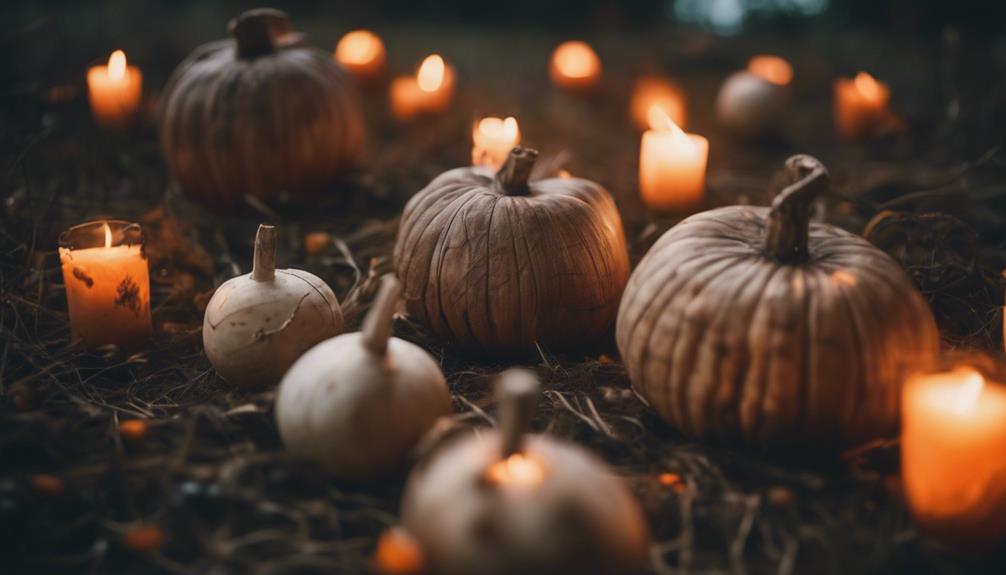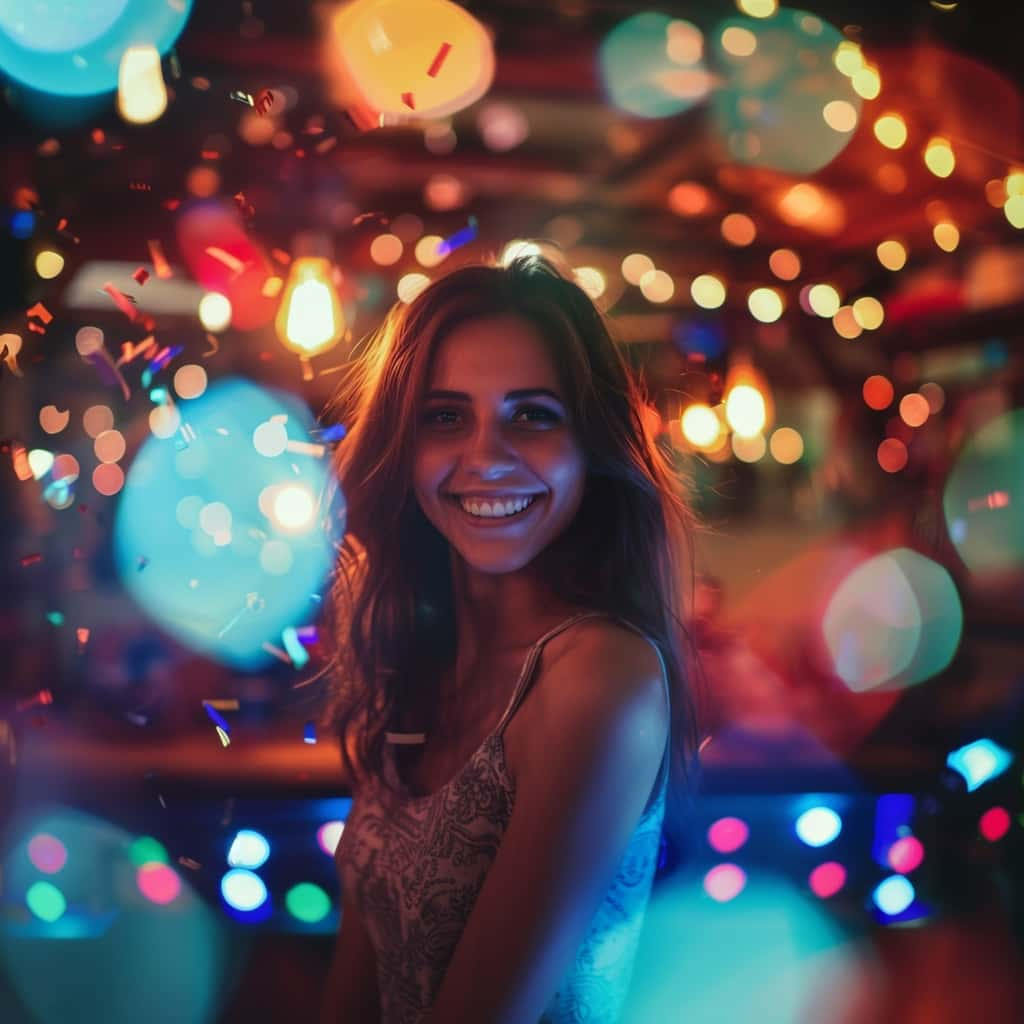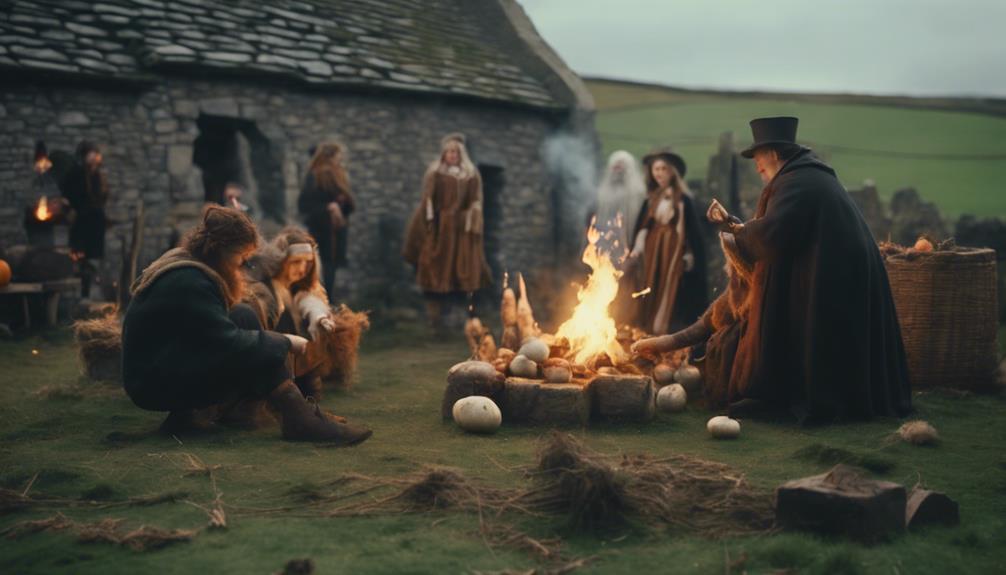Uncover the religious origins of Halloween through the fusion of ancient Celtic practices with Christian influences. The Celtic Festival of Samhain, observed over 2,000 years ago, marked the thin veil between the living and the dead, with spirits freely roaming. Christian holidays such as All Saints Day and All Souls Day merged with Samhain, shaping Halloween's evolution. From costumes for spirit protection to trick-or-treating traditions, Halloween seamlessly blends pagan and Christian customs. Explore how modern celebrations harmonize ancient beliefs, creating a unique tapestry of cultural traditions rich in history and significance. Discover the profound mix of religious influences that define Halloween's essence.
Key Takeaways
- Halloween originated from blending the Celtic festival of Samhain with Christian holidays.
- All Saints Day and All Souls Day significantly influenced the development of Halloween traditions.
- Modern Halloween customs evolved from merging pagan beliefs with Christian practices.
- Trick-or-Treating has roots in the medieval tradition of 'souling' on All Souls Day.
- Halloween symbolizes a harmonious fusion of ancient Celtic and Christian rituals.
Ancient Celtic Festival of Samhain
The Ancient Celtic Festival of Samhain, dating back over 2,000 years, marked the end of the harvest season for the Celts. This festival, celebrated around November 1st, held significant importance for the Celts as they believed that during Samhain, the barrier between the living and the dead was at its thinnest.
To honor their ancestors and spirits, the Celts would light bonfires, don costumes made from animal heads and skins, and offer food as a tribute. Samhain encompassed pagan rituals meant to appease restless spirits and pay respects to those who'd passed on. It was a time of spiritual reflection and preparation for the upcoming winter season.
The traditions associated with Samhain not only served practical purposes, such as marking the end of the agricultural year, but also carried deep spiritual meanings for the Celtic people, connecting them with their past and the natural cycles of life and death.
Thin Veil Between Worlds
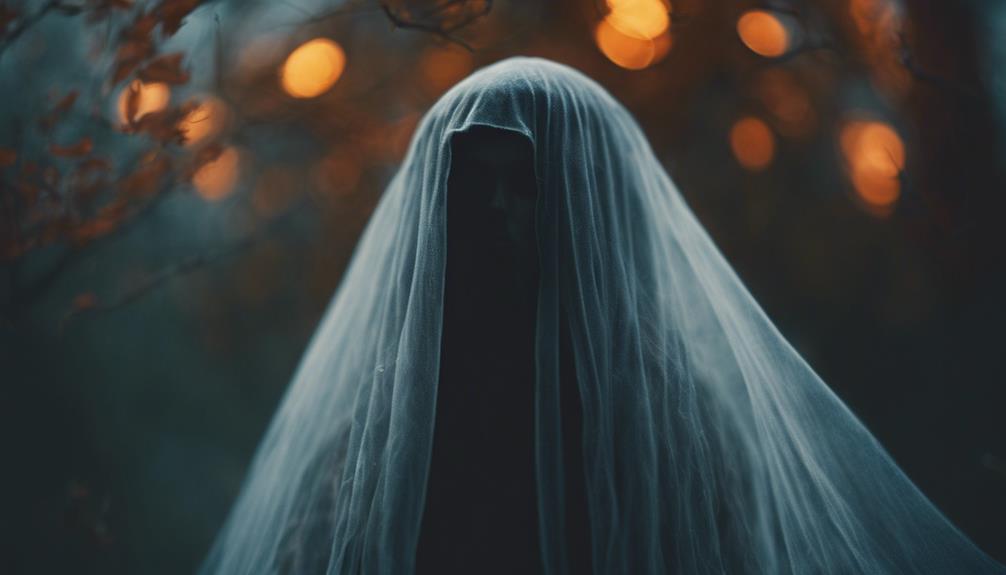
Amidst the ancient Celtic beliefs of Samhain lies the intriguing concept of a thin veil separating the living from the dead during Halloween. The Celts believed that during Samhain, the barrier between the physical world and the spiritual world became porous, allowing spirits to roam freely among the living. This idea of a thin veil between worlds has carried over into modern Halloween traditions, where it's thought that spirits can more easily connect with the living on this special night.
The thin veil concept adds a mystical and spiritual element to Halloween, emphasizing the interconnectedness between the living and the deceased. To honor and remember these spirits, people light candles and offer food as a way to pay respects and ensure goodwill. This belief in the closeness of the two worlds on Halloween underscores the spiritual significance of the holiday and the importance of acknowledging those who've passed on. By recognizing the thin veil between worlds, Halloween becomes a time to reflect on the mysteries of life and death, bridging the gap between the seen and the unseen.
Merging With Christian Holidays
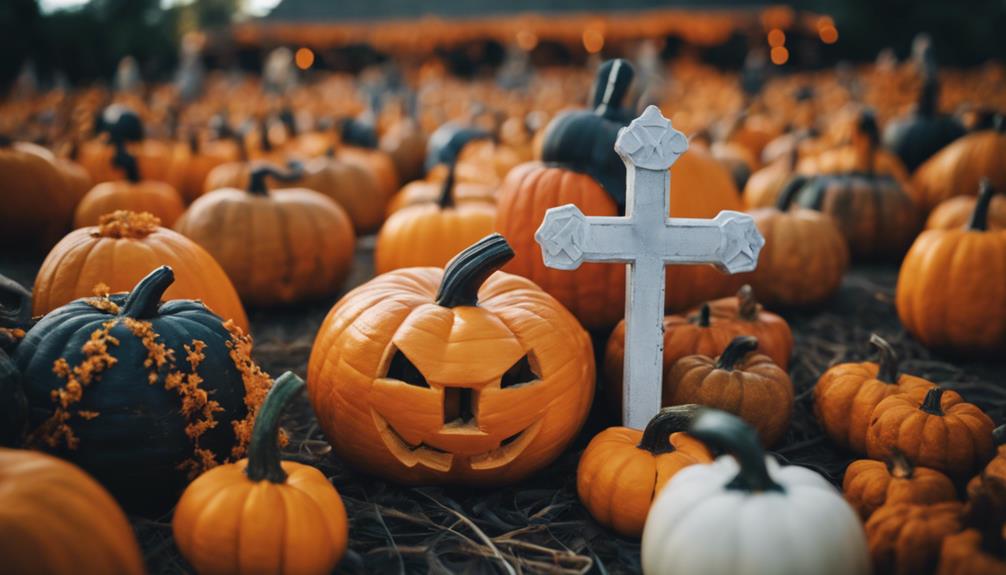
Halloween has a rich history of merging with Christian holidays, such as All Saints Day and All Souls Day, creating a unique blend of traditions.
The integration of religious symbolism from Christianity into Halloween customs has contributed to the holiday's evolution over time.
These historical religious influences have shaped the modern celebration of Halloween, highlighting the interconnectedness of pagan and Christian beliefs.
Christian Halloween Connection
Rooted in the blending of pagan Celtic traditions with Christian observances, the Christian connection to Halloween highlights the evolution of All Hallows Eve from practices surrounding All Saints Day. The Celts, who celebrated the festival of Samhain, marking the end of the harvest season and the beginning of winter, influenced the development of Halloween.
As Christianity spread, the Church sought to integrate pagan festivals with Christian holidays, such as All Saints Day on November 1st. The incorporation of Samhain customs into Christian celebrations helped shape the modern Halloween as it's understood today.
Symbols and themes associated with Halloween, like honoring the deceased, have Christian origins from All Saints Day. Despite its pagan roots, Halloween has strong ties to Christian traditions and beliefs, reflecting a blend of cultural influences.
This fusion of customs showcases how Halloween has evolved over time, incorporating elements from both pagan and Christian practices to create the holiday celebrated today.
Religious Symbolism Integration
Blending ancient Celtic traditions with Christian holidays, Halloween emerged as a unique celebration integrating religious symbolism with cultural customs. The integration of these two distinct belief systems resulted in a holiday that carries deep historical significance and rich symbolism. Here's how this blending of religious and cultural elements shaped Halloween:
- Incorporating Samhain Customs: The Celts celebrated Samhain as a festival marking the end of the harvest season and the beginning of winter. Christian influences integrated some of these customs, such as lighting bonfires and wearing costumes, into the observance of Halloween.
- Connection to All Saints Day: All Saints Day, a Christian holiday honoring saints and martyrs, falls on November 1st. This proximity influenced the development of Halloween as a Christianized holiday, intertwining elements of honoring the deceased with Christian beliefs.
- Christian Adaptation: Christianity repurposed pagan practices, like honoring ancestors and the dead, into a Christian context, giving rise to the religious symbolism present in Halloween today. This adaptation helped shape the holiday's unique blend of religious and cultural traditions.
Historical Religious Influences
When exploring the historical influences that shaped Halloween, one can observe the intricate merging of ancient Celtic traditions with Christian holidays, particularly evident in the integration of religious symbolism and cultural customs.
The Celts celebrated Samhain, marking the end of the harvest season and the beginning of winter, believing that on the night before November 1st, the boundary between the living and the dead blurred. With the introduction of Christian traditions, the pagan festival of Samhain gradually intertwined with All Saints Day on November 1st, a Christian holiday honoring saints and martyrs. This blending of traditions led to the evolution of Halloween, incorporating elements from both the Celtic festival and Christian celebrations.
Symbols and beliefs associated with Halloween, such as jack-o'-lanterns and costumes, have Christian origins intertwined with pagan roots, reflecting the unique cultural celebration that Halloween has become. Over time, Halloween has transformed into a holiday that combines ancient Celtic customs with Christian influences, showcasing a diverse array of traditions that continue to shape this popular festivity.
All Saints Day Influence
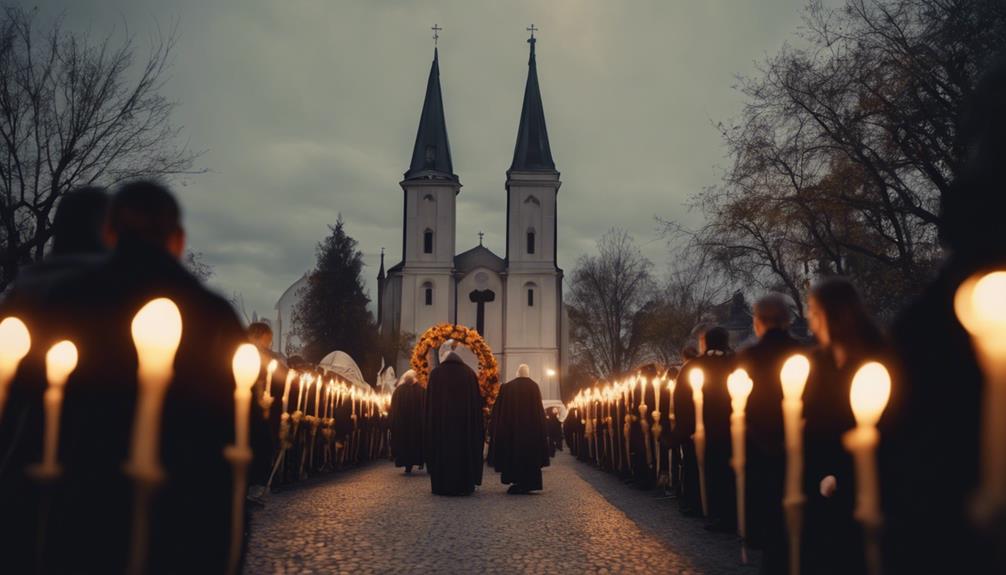
The influence of All Saints Day on the development of Halloween is significant, blending Christian reverence with ancient customs. This merging of traditions has shaped the way we celebrate Halloween today. Here are three key points highlighting the impact of All Saints Day on the evolution of Halloween:
- Blending of Customs: All Saints Day, with its Christian roots, intertwined with the Celtic festival of Samhain, where the veil between the living and the dead was believed to be at its thinnest. This blending of customs laid the foundation for the modern celebration of Halloween.
- Christian Traditions: All Saints Day, observed on November 1st, is a day dedicated to honoring all saints, known and unknown. The incorporation of this Christian holiday into the festivities surrounding Halloween added a layer of religious significance to the occasion.
- Pagan Influences: The connection between All Saints Day and Halloween exemplifies the harmonious coexistence of Christian beliefs with pagan influences. This amalgamation of diverse cultural elements contributed to the rich tapestry of Halloween traditions we observe today.
All Souls Day Traditions
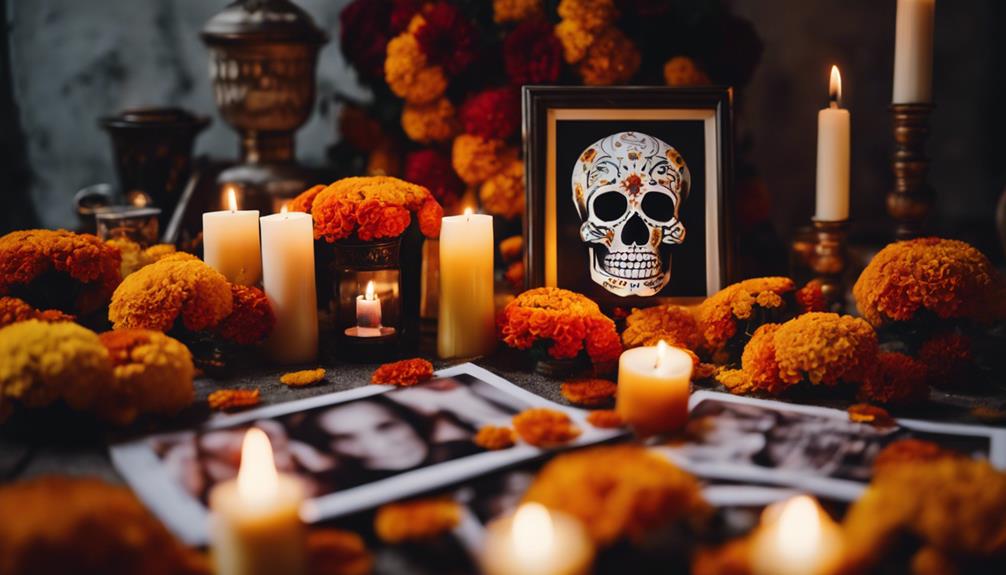
Honoring the departed souls, All Souls Day is a Christian tradition observed on November 2nd through prayers, remembrance, and Mass offerings. Stemming from the Celtic festival of Samhain, All Souls Day is part of the triduum known as Allhallowtide. It follows All Saints Day and focuses on praying for those souls who've passed away.
The belief is that through prayers and Mass offerings, the souls in purgatory can find peace and eventually reach heaven. Traditions associated with All Souls Day include visiting cemeteries to pay respects to the deceased, lighting candles to guide the souls on their journey, and offering prayers for the souls of loved ones. These practices aim to show reverence for the departed and to remember their lives with love and respect.
All Souls Day serves as a time for reflection on mortality and the continuation of life beyond earthly existence.
Evolution Into Modern Halloween
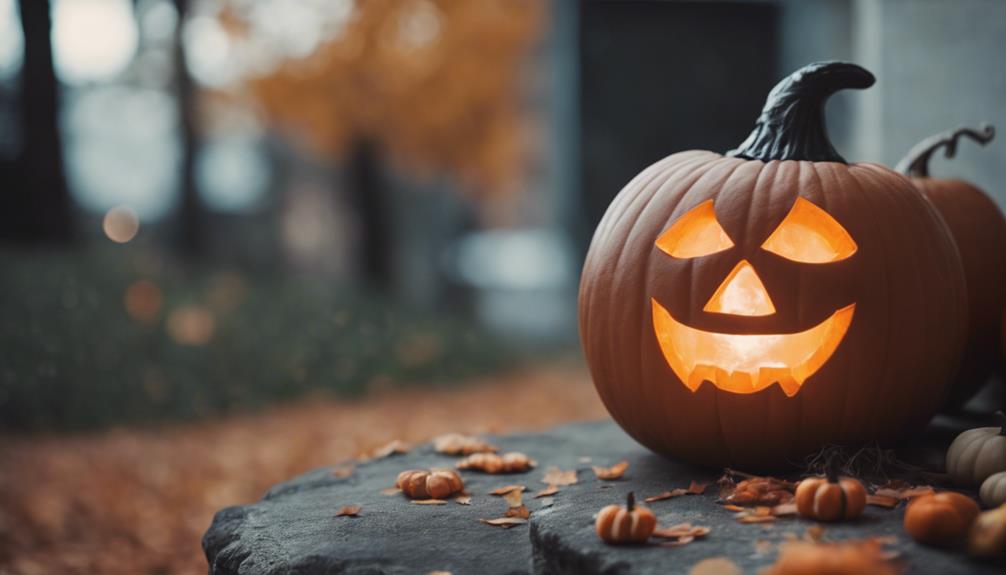
Evolution from the Christian traditions of All Souls Day and the ancient Celtic festival of Samhain led to the development of modern Halloween celebrations. As these customs intertwined over the centuries, new practices emerged, shaping the way we celebrate Halloween today.
Here are three ways in which Halloween evolved into the festive occasion it's now:
- Trick-or-Treating: The concept of trick-or-treating finds its roots in the medieval tradition of 'souling' on All Souls Day. During this practice, children would go door-to-door, receiving soul cakes in exchange for prayers for the deceased.
- Costumes: Initially, costumes were worn during Samhain to ward off malevolent spirits. Over time, these outfits became more elaborate and diverse, transforming into an essential part of Halloween celebrations.
- Blending of Traditions: The fusion of pagan practices with Christian beliefs resulted in the unique customs we associate with Halloween today, making it a vibrant and diverse holiday that combines elements from different cultural backgrounds.
Blending Ancient and Contemporary Beliefs
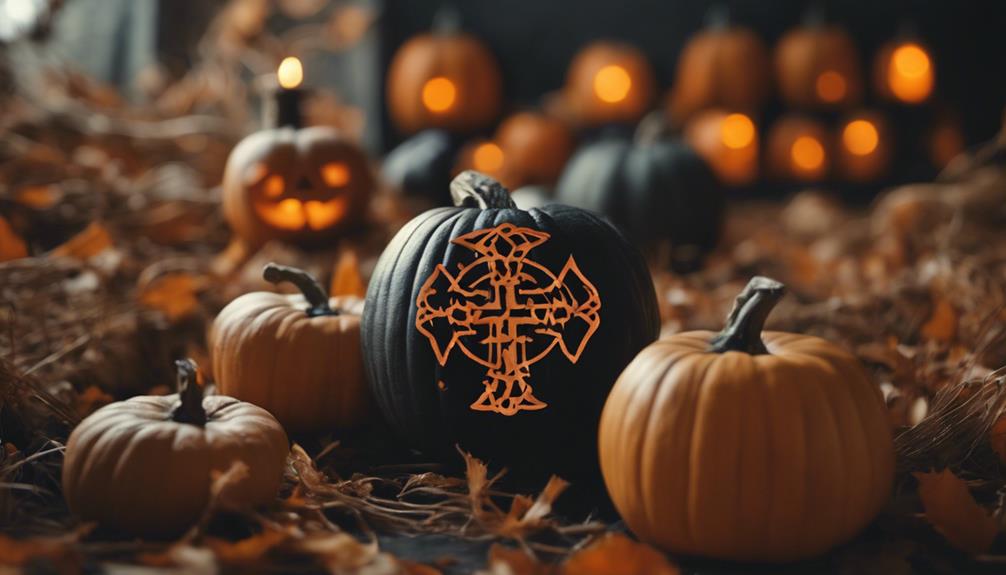
Halloween's unique blend of ancient Celtic practices and Christian influences creates a rich tapestry of traditions that honor both spiritual beliefs.
Jack-o-lanterns and costumes, once symbols of protection and connection to the spiritual world, now serve as fun elements of the holiday.
Origins of Halloween
Blending ancient pagan beliefs with Christian customs, the origins of Halloween reveal a fascinating fusion of cultural practices that have shaped its evolution into a modern-day celebration.
The roots of Halloween can be traced back to the Celts and their festival of Samhain, which marked the end of the harvest season and the belief that spirits could cross over into the living world. The Christian influence later transformed Samhain into All Hallows Eve, blending pagan traditions with Christian customs.
This transformation led to the observance of All Hallows Eve on October 31st, preceding All Saints Day and All Souls Day, creating a triduum to honor saints and pray for the departed. Halloween traditions like trick-or-treating and costume parties evolved from the merging of Celtic and Christian practices over time.
The origins of Halloween showcase a unique blend of ancient pagan beliefs and Christian traditions that have shaped the modern-day celebration.
Cultural Traditions Today
Today, as Halloween approaches, you can witness a vibrant tapestry of cultural traditions blending ancient Celtic roots with contemporary customs like trick-or-treating and costume parties.
The influence of the ancient festival of Samhain is still evident in the modern-day practices of honoring the deceased during Halloween. Traditional rituals such as lighting bonfires and offering food to spirits have evolved into the festive celebrations we see today.
Halloween serves as a unique fusion of pagan and Christian beliefs, showcasing a rich tapestry of cultural traditions that have stood the test of time. The spiritual significance of Halloween transcends generations, connecting people to ancient rituals while embracing the joyous festivities of the present day.
Religious Significance Explored
How do ancient Celtic traditions intertwine with Christian beliefs to create a unique religious significance found in Halloween? The blending of these diverse influences results in a rich tapestry of cultural fusion and spiritual connections that shape the holiday's significance.
- Celts and Samhain: The ancient Celts celebrated Samhain, marking the end of the harvest season and the beginning of winter. This festival also symbolized a time when the boundary between the living and the dead was believed to be blurred.
- All Saints Day: November 1st is recognized as All Saints Day in the Christian calendar, honoring saints and martyrs. This Christian observance coincides with the Celtic festival of Samhain, blending the traditions of honoring the deceased.
- Cultural Fusion: Halloween incorporates elements from both Celtic and Christian traditions, such as costumes and jack-o-lanterns, showcasing a harmonious blend of ancient and contemporary beliefs that continue to evolve over time.
Festive Halloween Customs
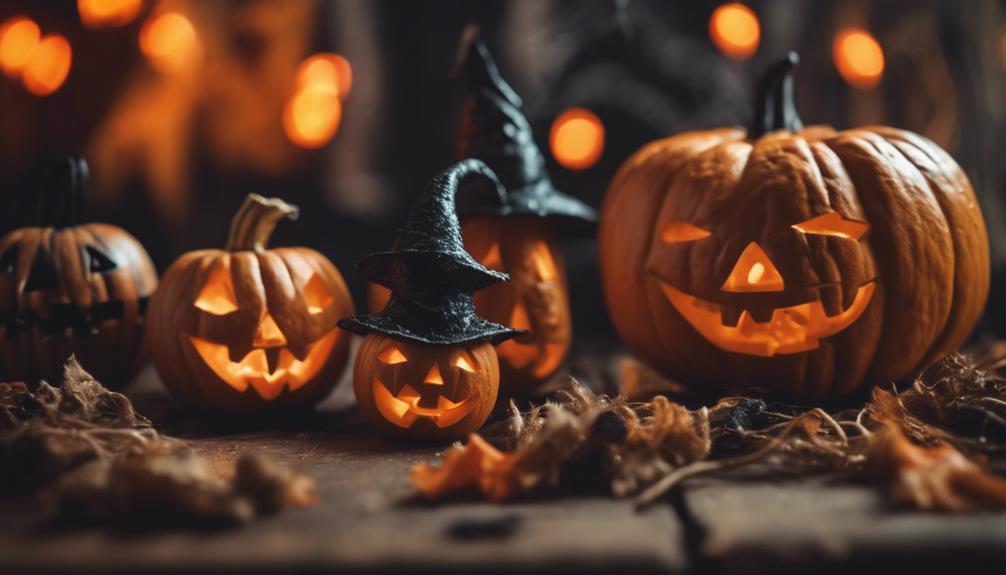
Festive Halloween customs, rooted in ancient Celtic traditions, have evolved over time to include activities like trick-or-treating and costume dressing. The Celts celebrated Samhain, marking the end of the harvest season and the beginning of winter, by lighting bonfires and offering food to spirits. These practices influenced modern Halloween customs, blending pagan and Christian influences.
All Hallows, or All Saints' Day, played a role in shaping Halloween traditions as well. The tradition of soul cakes during Allhallowtide evolved into the popular practice of trick-or-treating, where children go door to door asking for treats. Halloween customs also promote community engagement through events like costume contests and themed parties, encouraging creative expression and camaraderie.
As Halloween continues to be celebrated worldwide, these festive customs serve as a way to honor the past while embracing the fun and spooky spirit of the holiday.
Frequently Asked Questions
What Is the Religious History Behind Halloween?
The religious history behind Halloween is deeply rooted in Christian and Celtic traditions. Originally a blend of the Celtic festival of Samhain and the Christian All Hallows Eve, Halloween evolved into a time to honor saints and remember the departed.
Customs like dressing up and lighting candles symbolize beliefs in spiritual connections. This fusion of ancient pagan rituals and Christian observances highlights the rich tapestry of Halloween's religious origins.
What Is the True Story Behind Halloween?
The true story behind Halloween dates back to the ancient Celtic festival of Samhain, marking the end of the harvest season. During this time, the boundary between the living and the dead was believed to be thinnest, allowing spirits to roam freely.
Over time, Christianity transformed Samhain into All Hallows Eve, which eventually evolved into the Halloween that's familiar to us today. This holiday combines ancient traditions with modern customs like trick-or-treating and costume parties.
Are the Origins of Halloween Pagan?
Yes, the origins of Halloween are indeed pagan. The ancient Celts celebrated Samhain, a festival marking the end of harvest and believed the barrier between the living and the dead was thin. They made offerings to spirits, lit bonfires, and donned costumes for protection.
Over time, Christian influences like All Saints Day merged with these pagan customs, shaping the Halloween we recognize today as a blend of both traditions.
What Are the Creepy Origins of Halloween?
Halloween's creepy origins stem from the ancient Celtic festival of Samhain, where the barrier between the living and the dead was thought to be thin. To ward off malevolent spirits, Celts lit bonfires and donned costumes made from animal heads and skins. This tradition evolved into modern-day trick-or-treating.
Costumes were worn during Samhain to disguise from vengeful spirits. The festival's eerie roots continue to influence Halloween celebrations today.
Conclusion
To sum up, it's worth noting that Halloween has deep religious origins that date back to the ancient Celtic festival of Samhain. Today, it's a blend of pagan and Christian traditions, with influences from All Saints Day and All Souls Day.
Moreover, over 172 million Americans celebrate Halloween each year, making it one of the most popular holidays in the country.
So next time you put on a costume or carve a pumpkin, remember the rich history behind this spooky holiday.
